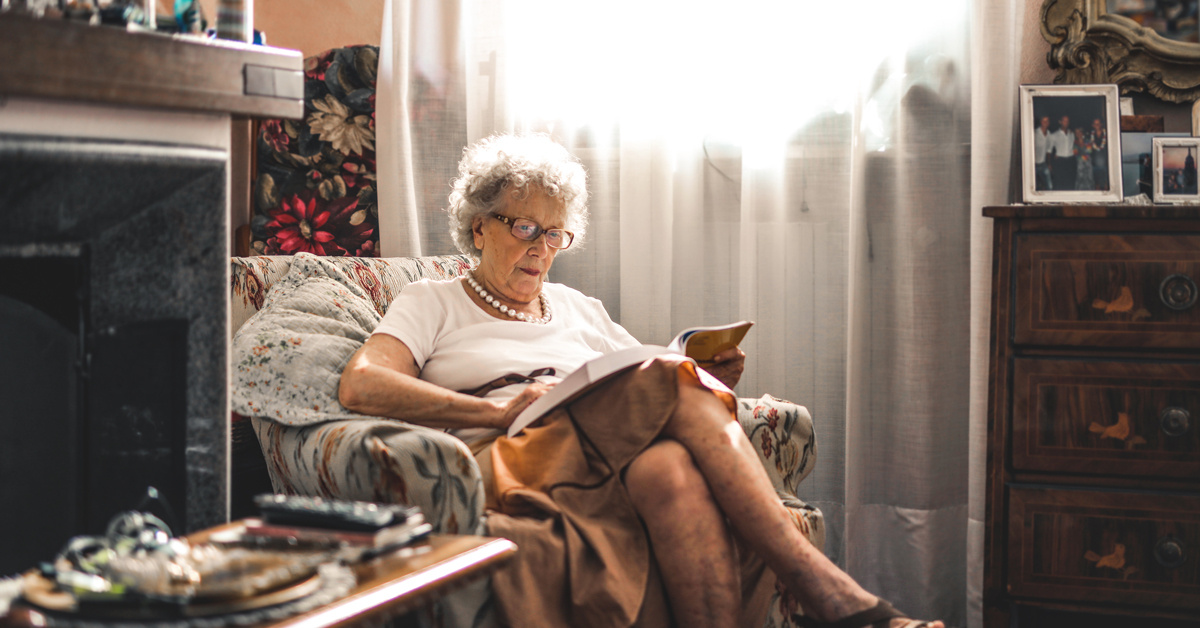A Good Night’s Sleep Leads to a Good Next Day!
The secret to a good night’s sleep just may be a comfortable, inviting bedroom. In fact, research shows that people sleep better when their bedroom is properly designed, quiet, dark, and cool.
Robert Miller, Apria Healthcare’s Vice President of Sleep Business, states, “At Apria, our goal is to help you create the ideal bedroom so you can get the sleep you need every night—and feel your best every day.”
Following are simple yet proven tips to help you do just that.
1. Design Your Bedroom for Comfort and Safety
Considering that you spend more than a third of your life in your bedroom, it makes sense to ensure that it is as comfortable and safe as possible.
First, choose a bed and mattress size that fit snugly in your room. Don’t get one that’s too big, or you’ll feel cramped.
Place your headboard against the center of the wall, potentially leaving room for bedside tables. And position your bed so you have a clear view of the room.
Organize your dresser, chairs, and other furniture so you have a clear, trip-free path for those middle-of-the-night trips to the bathroom.
2. Make It Personal
Display photographs of family or friends, or hang paintings or posters that have special meaning to you. These small touches all help to make your bedroom more personal and welcoming.
3. Ban Bad Bedding
The right mattress can help increase your sleep quality and reduce your risk of back pain, neck pain, and stress.
So what’s the best mattress for you? Most sleep specialists recommend a medium-firm mattress that provides appropriate pressure point relief specifically for your sleeping position and weight.
Pillows are also important. Choose one that supports the curvature of your neck to help keep your spine properly aligned during sleep.
Apria’s Robert Miller adds, “Also, choose sheets and blankets that are comfortable. And be sure to wash them frequently to reduce the buildup of allergens and dust.”
4. Choose Calming Colors
We all have our favorite colors. But research suggests that certain colors may make us feel at ease before bedtime, helping us sleep more soundly. For many people, these include softer tones such as yellow, green, white, blue, and silver.
You may love bright vibrant colors, but they may make it more difficult to relax and fall asleep.
5. Select Soothing Scents
Studies demonstrate that some scents reduce stress and anxiety and increase relaxation. These include lavender, chamomile, and peppermint. Consider infusing these fragrances in your bedroom to help you sleep better.
6. Cut the Clutter
A cluttered, disorganized bedroom will stress you out. To create a calming environment, spend a few minutes each day tidying up. Put your clothes in your closet or dresser, clean out your desk, and make your bed every morning.
7. Turn Down the Light
Sleep is primarily influenced by our biological clock, our “circadian rhythm.” This regulates our sleep-wake cycle based on the sun’s schedule. When the sun rises, your biological clock tells you to get up. When it sets, it tells you to get ready for bed.
That’s why, when you are ready for bed, keep your room as dark as possible to keep your biological clock ticking properly.
To ensure your room is dark, you may consider hanging blackout curtains or wearing a sleep mask.
And refrain from using electronic devices with screens, which produce artificial blue light that can make falling asleep more difficult.
8. Turn Down the Sound
Noise is the enemy of sleep. That’s why it’s so important to keep your bedroom as quiet as possible. If external noises disturb you, a white noise machine may help drown out those disturbing sounds.
Many people listen to low, soothing music before they go to bed because it helps them fall asleep.
Before you go to bed, be sure to turn off notifications on your smartphone.
9. Stay Cool
As we sleep, our body temperature naturally lowers. This happens in the initial stages of sleep and helps us to feel sleepy.
A cooler room also helps improve your quantity and quality of sleep, while hotter temperatures tend to disrupt sleep.
Most sleep experts say the ideal temperature is somewhere between 65 and 69 degrees Fahrenheit (18 and 20 degrees Celsius).
10. Say Goodnight to Fido
We all love our pets. But if they hop up on and off your bed, take up valuable bed space, and keep you up all night, it’s time to consider banishing them from your bedroom.
Make the Ideal Real
Creating a comfortable, cozy bedroom that’s conducive to sleep is fairly simple. The first step: assess your bedroom, decide which of the tips offered in this post will be most helpful to you, and then act. Robert Miller sums it all up: “You’ll be that much closer to getting the sleep you need and deserve.”
Speak to a sleep coach
We’re here to help you manage your sleep apnea. To speak directly to a live sleep coach, call 877-255-2426 or visit www.apria.com/services/sleep-apnea.
Apria Supplies on Schedule program
See how easy it is to receive your sleep apnea supplies by enrolling in Apria’s opt-in program. Learn more now!
References
1. Suni, E. (Updated 2022, April 20). How to Design the Ideal Bedroom for Sleep.
Sleep Foundation. https://www.sleepfoundation.org/bedroom-environment/how-to-design-the-ideal-bedroom-for-sleep.
2. Pacheco, P. (Updated 2022, June 17). The Bedroom Environment. Sleep Foundation. https://www.sleepfoundation.org/bedroom-environment.
3. Raypole, C. (2021, February 12). Everything You Need to Create the Bedroom of Your Dreams. Healthline. https://www.healthline.com/health/healthy-sleep/ultimate-guide-for-turning-your-bedroom-into-a-sleep-sanctuary.
4. Walsh, K. (2021, October 13). 7 Bedroom Design Tips for Better Sleep, According to Experts. Eating Well. https://www.eatingwell.com/article/7921597/bedroom-design-tips-for-better-sleep/.
5. Preparing Your Bedroom for a Great Night's Sleep. Johns Hopkins Medicine.
https://www.hopkinsmedicine.org/health/wellness-and-prevention/preparing-your-bedroom-for-a-great-nights-sleep.
LEGAL DISCLAIMER: Material in this newsletter is provided for general health education and informational purposes and to provide references to other resources only; it may not apply to you as an individual. While Apria Healthcare believes that the information provided through this communication is accurate and reliable, Apria Healthcare cannot and does not make any such guarantee. It is not intended to be a replacement for professional medical advice, evaluation, diagnosis, services or treatment (collectively, “medical treatment”). Please see your healthcare provider for medical treatment related to you and your specific health condition(s). Never disregard medical advice or delay seeking medical care because of something you have read on or accessed through this website. Reading this newsletter should not be construed to mean that you have a healthcare provider/patient relationship.

.png)



